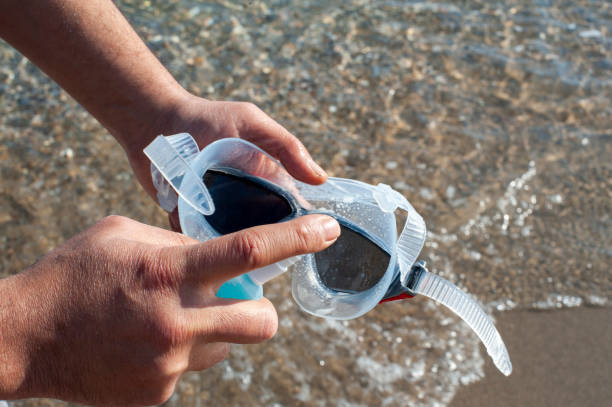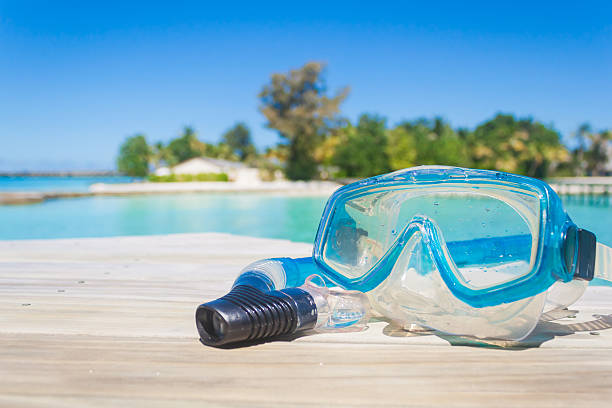When it comes to swimming, wearing a swim cap is more than just a fashion statement. It plays a crucial role in your performance and comfort in the water. Understanding how do you wear a swim cap can make all the difference. In this blog, we will delve into the significance of wearing a swim cap, walk you through the step-by-step process, and touch upon the various benefits it offers. Dive in to discover how this simple accessory can elevate your swimming experience!
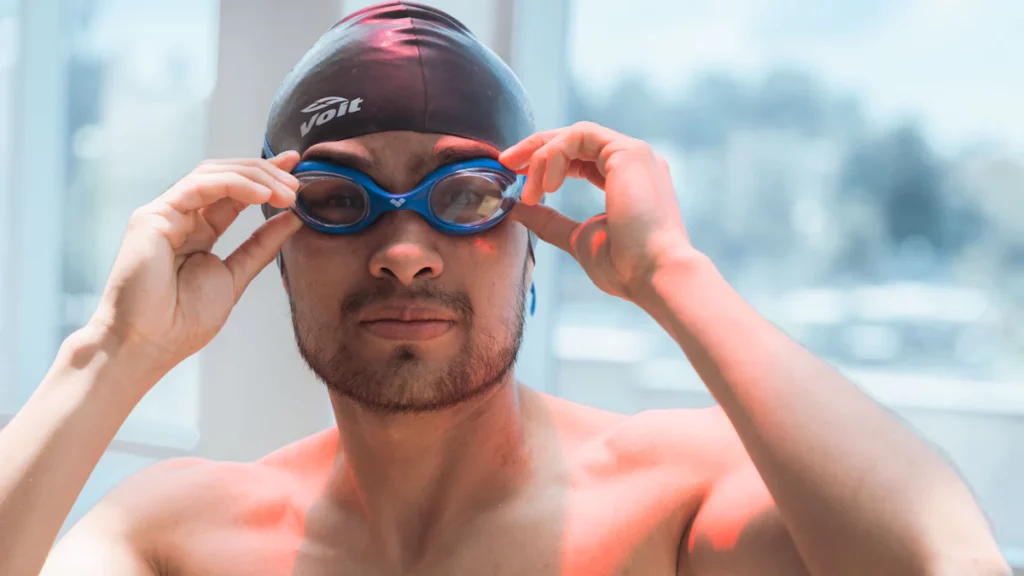
How Much Does a Swim Cap Help?
A swim cap offers multiple benefits that many swimmers may not fully realize. Whether you’re looking to protect your hair, improve your swim performance, or maintain pool hygiene, a swim cap can make a significant difference. Now let’s give a detailed exploration of its functions and benefits.
It Protects Your Hair.
When you wear a swim cap, you are not just making a fashion statement. The primary purpose is to protect your hair from various elements, especially chlorine. Chlorine damage can be quite harmful to your hair, causing it to become dry and brittle over time. By wearing a swim cap, you create a barrier between your hair and the pool water, minimizing exposure to these damaging chemicals.
Additionally, if you use hair products such as gels or oils, a swim cap can prevent these substances from mixing with the pool water. This not only helps in maintaining the cleanliness of the pool but also ensures that your hair products do not get washed away while swimming.
It Enhances Your Swim Performance.
The benefits of wearing a swim cap extend beyond hair protection. When it comes to swim performance, every little detail counts. A swim cap can help in reducing drag as you move through the water. It increases hydrodynamics by streamlining your head shape, allowing you to glide more smoothly underwater.
For competitive swimmers looking for that extra edge, a swim cap can provide a competitive advantage. By minimizing resistance and improving aerodynamics, swimmers can achieve faster times and better results in their races.
It Ensures Hygiene and Pool Maintenance.
Apart from personal benefits, wearing a swim cap also contributes to hygiene and pool maintenance. Keeping the pool clean is essential for everyone’s health and safety. A swim cap prevents loose hairs from entering the pool water, reducing the chances of clogging filters or drains.
Moreover, following pool rules regarding swim caps is crucial in public pools for hygiene reasons. By wearing a swim cap, you not only adhere to these regulations but also contribute to maintaining a clean and safe swimming environment for yourself and others.
How to Wear a Swim Cap Properly? Step-by-Step Guide
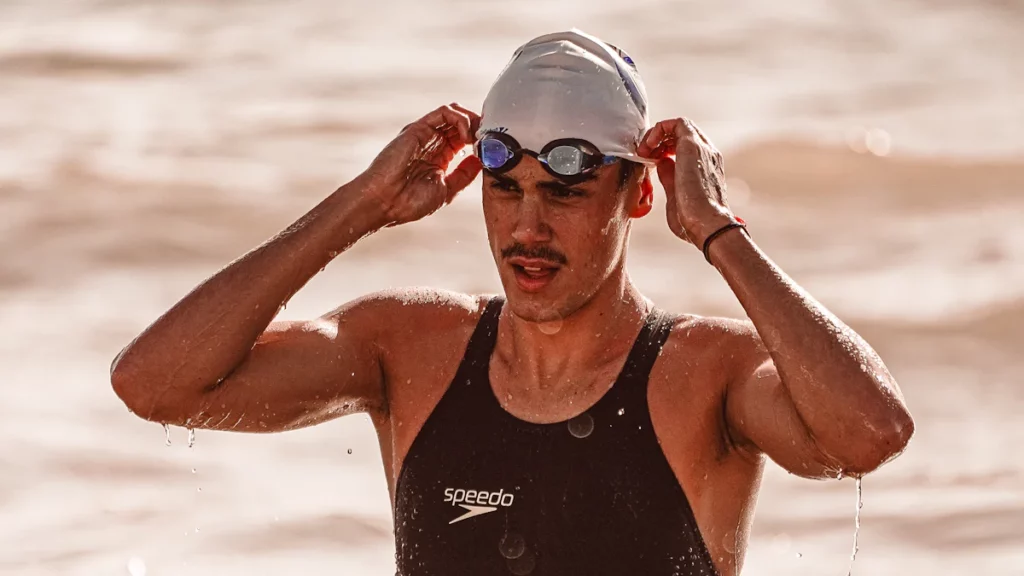
The proper technique to wear a swim cap can significantly enhance your swimming experience. By following a few simple steps, you can ensure a comfortable and secure fit that protects your hair and improves your performance in the water.
Step 1: Prepare Your Hair
Start by wetting your hair, which helps the swim cap slide on more easily and reduces discomfort. If you have long hair, tie it back in a ponytail or bun to keep it secure and prevent tangling.
Wet, tied-back hair makes it much easier to put on the cap and ensures it fits snugly. This initial preparation step is crucial for a comfortable and hassle-free swimming experience, allowing the cap to provide better protection for your hair against chlorine and other pool chemicals.
Step 2: Stretch Your Swim Cap
When stretching your swim cap, be gentle to avoid pulling or snagging your hair. A snug fit is essential for comfort and effectiveness, but it shouldn’t cause pain. Use gentle stretching techniques, such as pulling from different sides, to achieve an even stretch without putting too much pressure on one area. This approach helps distribute the pressure evenly, making it easier to put on the cap smoothly. Ensuring the cap is properly stretched will enhance its fit and performance in the water.
Step 3: Put on the Cap
Position the front of the swim cap on your forehead and gently pull it back over your head until it covers all your hair. Make sure to tuck in any loose strands for maximum protection. Adjust the cap for comfort and security, ensuring that the crease aligns with the center of your head from front to back. This proper alignment helps the cap stay in place during your swim, providing a comfortable fit that doesn’t shift or cause distractions while you’re in the water.
Step 4: Use Goggles with Swim Caps
Many swimmers often ask how to wear swim goggles with cap, 2 methods are commonly applied. For added protection and comfort, consider using goggles with your swim cap. Wearing goggles under the cap creates a secure fit, preventing water from seeping in around your eyes and providing a tight seal against chlorine.
Alternatively, wearing goggles over the cap offers extra security during intense swimming sessions and makes it easier to adjust or remove them without disturbing the cap’s fit. Experiment with both methods to find what works best for you, enhancing your overall swimming experience by safeguarding both your vision and hair.
How to Secure Your Hair Under a Swim Cap?
Securing your hair under a swim cap can be a bit tricky, especially if you have long or thick hair, but with a few simple steps, you can make it a breeze. First, start with wet or damp hair; this makes it easier to manage and helps the cap slide on smoothly. If your hair is long, gather it into a low bun or ponytail at the nape of your neck. Braiding your hair can also be an effective way to keep it secure and tangle-free.
Next, hold the swim cap open with both hands, ensuring you’re gripping the sides without using your nails to avoid tearing the material. Lean forward and place the front of the cap on your forehead. As you pull the cap over your head, use your fingers to tuck any loose strands or sections of hair inside. If you have particularly stubborn hair, consider using a bit of conditioner to help it stay in place under the cap.
Finally, once the cap is on, run your fingers around the edges to make sure it’s snug and all hair is tucked in. Adjust the cap as needed to ensure a comfortable fit without any air pockets. With these steps, you can keep your hair secure and ready for a great swim!
How to Keep a Swim Cap from Falling Off?
Keeping a swim cap from falling off can be a challenge, but with a few strategic tips, you can ensure it stays put throughout your swim session. Here’s how:
- Wet Your Hair: Start with wet or damp hair. Dry hair can cause the cap to slip off more easily. Wet hair creates better traction for the cap.
- Use a Little Conditioner: Applying a small amount of conditioner to your hair can help the cap glide smoothly and stay in place. Be sure not to use too much, as it can make your hair too slippery.
- Proper Positioning: When putting on the cap, lean forward slightly. Place the front of the cap on your forehead and stretch it over your head towards the back. Make sure to cover all your hair and position the cap evenly without air pockets.
- Secure Your Hair: If you have long hair, gather it into a low bun or braid it before putting on the cap. This keeps it contained and prevents it from pushing the cap off.
- Choose the Right Cap: Make sure you’re using a cap that fits well. It should be snug but not too tight. Caps come in various sizes, so finding the right one for your head shape and hair volume is crucial.
- Check for Air Pockets: After putting on the cap, run your hands over it to check for any air pockets. Smoothing these out will help keep the cap in place.
- Double Cap Method: For extra security, some swimmers use two caps. Put on a latex cap first, then cover it with a silicone cap. This method provides extra grip and reduces the chances of the cap slipping off.
How Should a Swim Cap Fit?
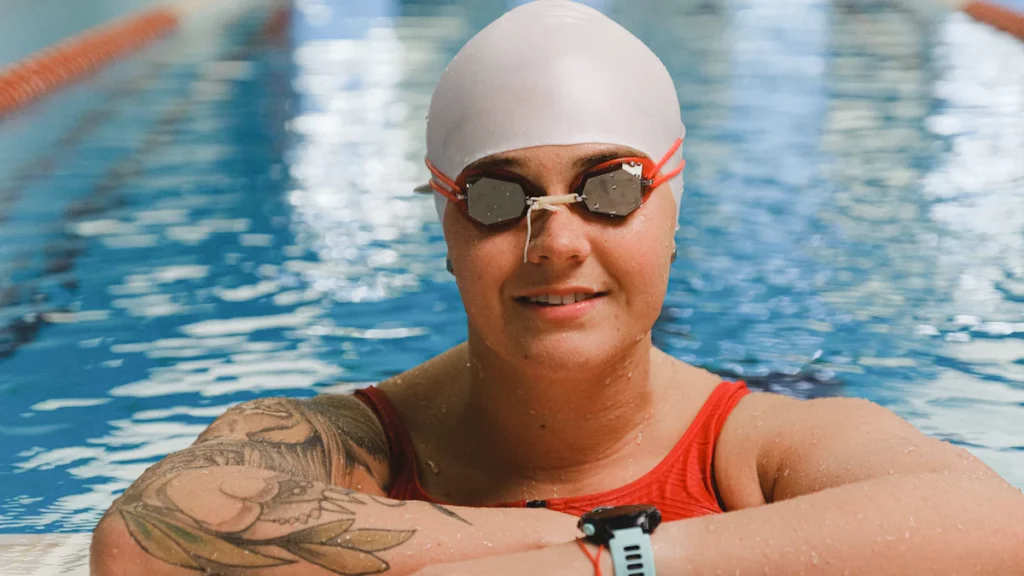
A well-fitted swim cap is essential for both recreational and competitive swimmers. Not only does it enhance performance by reducing drag, but it also protects hair from chlorine and other chemicals found in pool water. Here’s an expert view on the optimal fit of a swim cap, supported by data and facts to underline its importance.
Key Features of a Good Fit
Swim coaches and professional swimmers agree that a swim cap should fit snugly but comfortably, without causing discomfort or pain. According to Coach Richard Quick, a renowned swim coach with six Olympic gold medals to his name, a swim cap should feel like a second skin. It should cover all of your hair and stay in place during vigorous swimming.
- Snugness: A swim cap should be tight enough to stay in place but not so tight that it causes headaches or leaves deep marks on your forehead. The snug fit minimizes water entry and reduces drag, allowing for a smoother swim.
- Coverage: The cap should fully cover your hairline, including the ears. This ensures maximum protection for your hair and helps keep the cap in place.
- Material Flexibility: Different materials offer varying levels of stretch and comfort. Silicone caps are popular for their durability and snug fit, while latex caps are thinner and more pliable. Lycra caps, though less common in competitive swimming, provide a comfortable fit but may allow more water in due to their looser fit.
Tips for Ensuring a Good Fit
A study published in the Journal of Sports Sciences analyzed the hydrodynamic benefits of wearing swim caps. The study found that swimmers wearing caps experienced a reduction in drag by approximately 3-4%. This reduction can lead to improved swim times, particularly in competitive settings.
Furthermore, a survey conducted by USA Swimming revealed that 87% of competitive swimmers use silicone caps due to their superior fit and comfort. The survey also highlighted that swimmers who reported an ill-fitting cap experienced an average of 0.5 seconds slower per 50 meters, underscoring the importance of a proper fit. Here are some tips to ensure a good fit:
- Try Different Sizes and Brands: Swim caps come in various sizes and brands, each offering slightly different fits. Trying out a few can help you find the one that best suits your head shape and hair type.
- Practice Proper Wearing Technique: Ensure your hair is wet or slightly damp before putting on the cap. Stretch the cap gently and position it from your forehead to the back of your head, tucking in any loose strands.
- Adjust as Needed: Once the cap is on, adjust it to eliminate any air pockets or wrinkles. A smooth surface reduces drag and enhances comfort.
Other Tips and Tricks to Enhance Your Wearing
To make the most out of your swim cap and ensure maximum comfort and performance, there are additional strategies you can incorporate. These tips and tricks can help enhance your overall experience while wearing a swim cap.
Choose the Right Cap
A swim cap can significantly impact your swimming experience. A cap that’s too tight can be uncomfortable, while a cap that’s too loose won’t stay on properly. Look for caps labeled as “junior” or “adult” and consider trying a few different sizes to find the best fit. Then think about what you need from your swim cap. Here are 4 types of swimming caps to meet your needs.
Latex Swim Caps
Latex swim caps are popular because they’re lightweight and offer a tight fit. They’re also quite affordable. However, they can be a bit tricky to put on and might not be the best choice for people with latex allergies.
Silicone Swim Caps
Silicone swim caps are thicker and more durable than latex caps. They provide a snug fit and are less likely to tear. Silicone caps are also more comfortable for longer swimming sessions, making them a favorite among regular swimmers.
Lycra Swim Caps
Lycra swim caps are made from fabric, offering a comfortable fit without squeezing your head. They’re not as effective at keeping water out, but they’re great for swimmers who prioritize comfort over performance.
Dome Caps
Another option to explore is Dome Caps, which offer a unique design that differs from traditional swim caps. The dome shape provides extra room for your hair while ensuring a secure fit around the edges of your head. This design is popular among swimmers seeking both comfort and style in their swim gear.
Maintain Your Swim Cap
Caring for your swim cap is essential to prolong its lifespan and ensure optimal performance each time you hit the water. By following simple cleaning tips and storage advice, you can keep your cap in top condition for many swims to come.
Cleaning Tips
- After each use, rinse your swim cap with cool water to remove any chlorine or salt residue.
- Use mild soap or shampoo to gently wash the cap, avoiding harsh chemicals that may damage the material.
- Allow the cap to air dry completely before storing it to prevent mold or mildew growth.
- Avoid exposing your swim cap to direct sunlight or high heat, as this can cause fading or deformation of the material.
Storage Advice
- Store your swim cap in a cool, dry place away from direct sunlight when not in use.
- Avoid folding or creasing the cap, as this can lead to permanent wrinkles that affect its fit.
- Consider using a mesh bag or pouch to protect your swim cap from dust and debris when stored with other gear.
- Regularly inspect your swim cap for signs of wear and tear, such as stretching or thinning material, and replace it if necessary.
Common Mistakes to Avoid
Incorporating good practices when wearing a swim cap is crucial for maximizing its benefits and ensuring a comfortable swimming experience. By being mindful of some common mistakes, you can make the most out of this essential swimming accessory.
Incorrect Positioning
One common mistake swimmers make is wearing their caps too far back on their heads. To achieve an optimal fit, position the front edge of the cap just above your eyebrows before pulling it back over your head. This ensures full coverage while minimizing discomfort during your swim.
Not Wetting Hair
Before putting on your swim cap, ensure that your hair is wet. Wet hair makes it easier to slide on the cap smoothly without tugging or pulling on strands. Additionally, dampening your hair helps create a seal between the cap and your scalp, preventing water from seeping in during swimming sessions.
Conclusion
Swim caps play a crucial role in your swimming experience, whether you’re a casual swimmer or a competitive athlete. By learning how do you wear a swim cap, you can protect your hair from harmful chemicals like chlorine and keep it secure while you glide through the water. It’s not just about style; it’s about performance and hygiene.
Personal Experience:
- As a swimmer myself, I always ensure that my kids wear swim caps too. They need to get accustomed to this practice early on. Silicone caps are our go-to choice for their durability and secure fit.
- Wearing a swim cap correctly is key to preventing chlorine damage to your hair. Make sure all your hair is tucked inside the cap, and remember to put it on over wet hair for a comfortable fit. Keeping spare caps handy is always a smart move in case of tears.
- For swimmers with little or no hair, latex caps offer an excellent fit due to their stretchability. If the regular-sized cap feels loose, consider trying a junior or kids cap for a snugger feel.
By using swim caps, you maintain pool cleanliness and prevent stray hairs from interfering with your swimming session. Imagine the ease of post-swim routines without dealing with wet, tangled hair! Embrace the benefits of swim caps and enjoy every moment in the water hassle-free!
FAQ
Q1: How tight should a swim cap be?
A swim cap should be snug enough to stay on without sliding off but not so tight that it causes discomfort or headaches. It might take a few tries to find the perfect fit.
Q2: Can swim caps cause hair loss?
Swim caps themselves don’t cause hair loss. However, if they’re too tight or if you put them on and take them off roughly, they can cause hair breakage. Be gentle when handling your cap.
Q3: How do I stop my swim cap from slipping off?
Make sure your hair is wet before putting on the cap, and consider using a bit of conditioner to help it slide on smoothly. Adjust the cap to eliminate any air pockets, and ensure it’s snug but not too tight.
Q4: Are there swim caps for kids?
Yes, swim caps come in various sizes, including smaller ones designed for children. Look for caps labeled “junior” or “kids” for a better fit for younger swimmers.
Q5: Can I wear a swim cap with long hair?
Absolutely! For long hair, consider braiding or tying it up before putting on the cap. You can also look for larger swim caps designed to accommodate long.
Q6: How to tie hair for a swimming cap?
To tie hair for a swimming cap, gather your hair into a low ponytail or bun at the nape of your neck. For long hair, braiding can also be effective to keep it secure and tangle-free. Ensure the hairstyle is compact and flat to make it easier to fit under the cap.
Q7: What is the best hairstyle for under a swim cap?
The best hairstyle for under a swim cap is a low bun or a braid. These styles keep the hair compact and minimize bulk, making it easier to wear the cap securely and comfortably without creating bumps or air pockets.
